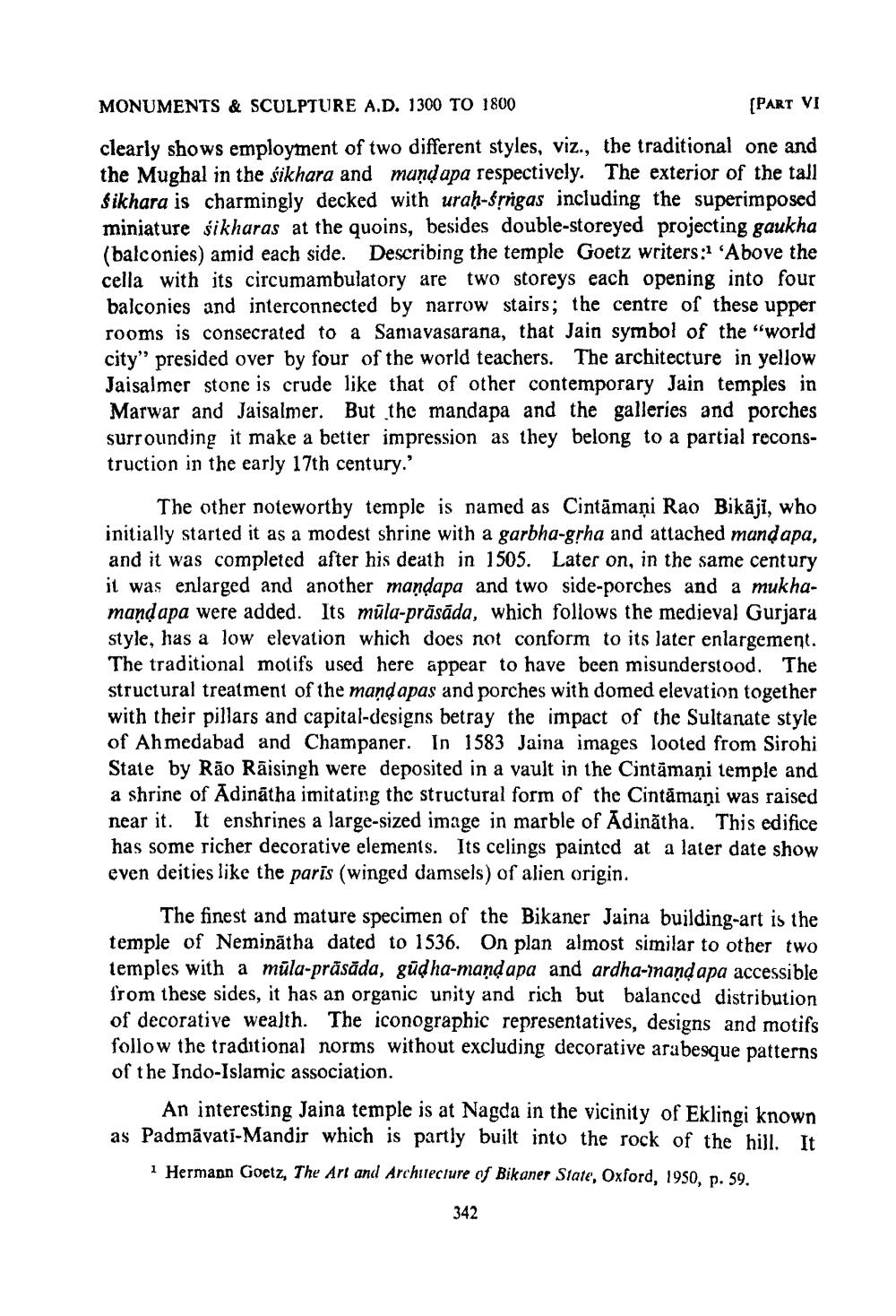________________
MONUMENTS & SCULPTURE A.D. 1300 TO 1800
(PART VI
clearly shows employment of two different styles, viz., the traditional one and the Mughal in the sikhara and mund apa respectively. The exterior of the tall Sikhara is charmingly decked with urah-śrrigas including the superimposed miniature sikharas at the quoins, besides double-storeyed projecting gaukha (balconies) amid each side. Describing the temple Goetz writers:1 'Above the cella with its circumambulatory are two storeys each opening into four balconies and interconnected by narrow stairs; the centre of these upper rooms is consecrated to a Samavasarana, that Jain symbol of the "world city" presided over by four of the world teachers. The architecture in yellow Jaisalmer stone is crude like that of other contemporary Jain temples in Marwar and Jaisalmer. But the mandapa and the galleries and porches surrounding it make a better impression as they belong to a partial reconstruction in the early 17th century.'
The other noteworthy temple is named as Cintāmani Rao Bikāji, who initially started it as a modest shrine with a garbha-grha and attached mand apa, and it was completed after his death in 1505. Later on, in the same century it was enlarged and another mandapa and two side-porches and a mukhamandapa were added. Its müla-prāsāda, which follows the medieval Gurjara
, has a low elevation which does not conform to its later enlargement. The traditional motifs used here appear to have been misunderstood. The structural treatment of the mand apas and porches with domed elevation together with their pillars and capital-designs betray the impact of the Sultanate style of Ahmedabad and Champaner. In 1583 Jaina images looted from Sirohi State by Rão Rāisingh were deposited in a vault in the Cintamani temple and a shrine of Adinātha imitating the structural form of the Cintamani was raised near it. It enshrines a large-sized image in marble of Ādinātha. This edifice has some richer decorative elements. Its celings painted at a later date show even deities like the paris (winged damsels) of alien origin.
The finest and mature specimen of the Bikaner Jaina building-art is the temple of Neminātha dated to 1536. On plan almost similar to other two temples with a mūla-präsåda, güdha-mand apa and ardha-inand apa accessible from these sides, it has an organic unity and rich but balanced distribution of decorative wealth. The iconographic representatives, designs and motifs follow the traditional norms without excluding decorative arabesque patterns of the Indo-Islamic association.
An interesting Jaina temple is at Nagda in the vicinity of Eklingi known as Padmāvati-Mandir which is partly built into the rock of the hill. It
1 Hermann Goetz, The Art and Architecture of Bikaner State, Oxford, 1950, p. 59.
342




